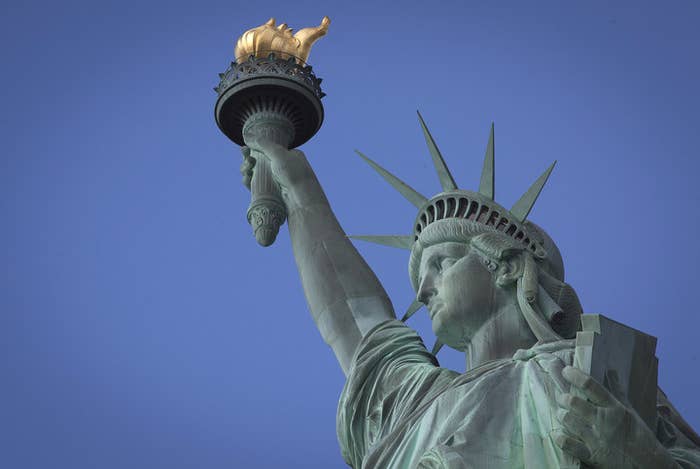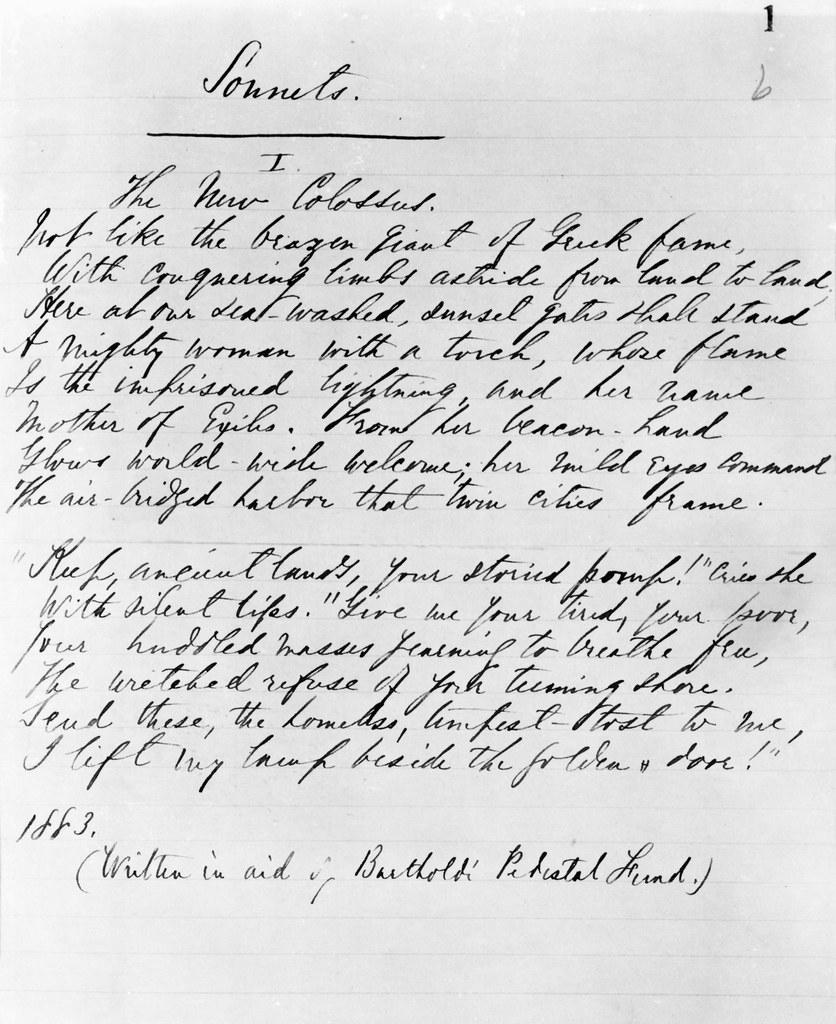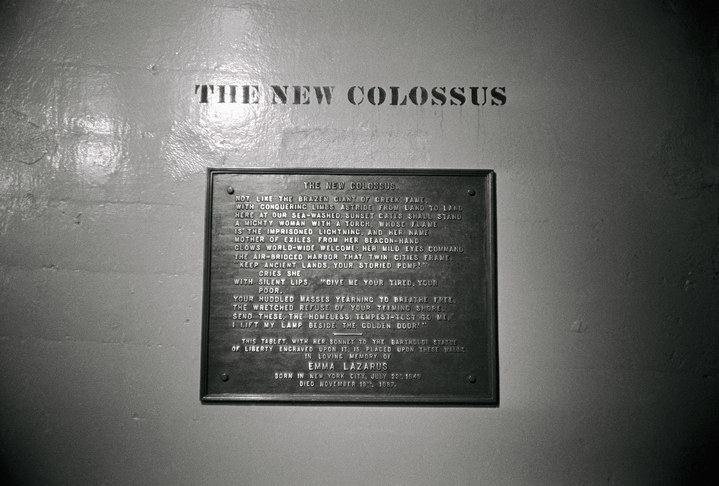
The Statue of Liberty and the “give me your tired, your poor, your huddled masses” inscription on her base, are iconic symbols of the United States, an oft-invoked reminder of the fact that America is a proud nation of many immigrants. But here’s the thing: neither those words nor the association with immigration were part of the statue’s original plan. Here’s how we arrived at our shared modern perception of Lady Liberty.
“Liberty Enlightening the World” was, famously, a gift from France to the United States; it arrived in New York City in 1885, and was intended to celebrate the Declaration of Independence, American democracy, and the French-American friendship. But that gift didn't include the pedestal on which she would stand. So, Americans held fundraisers — including theatrical performances, prizefights, and art auctions — to pay for the pedestal. Emma Lazarus, a 34-year-old Jewish-American author living in New York City, wrote a poem called "The New Colossus" for one such auction in 1883.
According to Esther Schor, a historian who wrote a book on Lazarus, Lazarus was inspired to write the poem after she saw Lady Liberty’s torch on display in Madison Square Park at a different fundraising event. Turns out, Americans were actually pretty disinterested in helping to pay for the project, and Lazarus saw a connection between the lack of funds for the pedestal, and the lack of funds people were willing to contribute when she had attempted to raise money to help Russian-Jewish refugees the year before. While many large monuments represent a country’s strength and wealth, Lazarus began to envision a Statue of Liberty that was a beacon of hope and hospitality for immigrants.
“The statue was a special kind of mother — a ‘mother of exiles’ — a mother whose mission is not to reproduce herself, but rather to adopt the abandoned, the orphaned, the persecuted,” Schor said. “She’s tender and accepting, but also fiercely protective, and her iconoclastic message smashes the icons of enlightenment and imperialism.”

Here's the full text of the sonnet that Lazarus wrote for the auction:
Not like the brazen giant of Greek fame,
With conquering limbs astride from land to land;
Here at our sea-washed, sunset gates shall stand
A mighty woman with a torch, whose flame
Is the imprisoned lightning, and her name
Mother of Exiles. From her beacon-hand
Glows world-wide welcome; her mild eyes command
The air-bridged harbor that twin cities frame.
“Keep, ancient lands, your storied pomp!” cries she
With silent lips. “Give me your tired, your poor,
Your huddled masses yearning to breathe free,
The wretched refuse of your teeming shore.
Send these, the homeless, tempest-tost to me,
I lift my lamp beside the golden door!”
Though Lazarus was well-known in elite literary circles, and was a successful and respected poet, “The New Colossus” went mostly unnoticed at the time. But after she died, Lazarus’s friend Georgina Schuyler (a descendant of American immigrant Alexander Hamilton and Elizaaaaa Schuyler) found the poem tucked in a small portfolio of poems that were written to raise money for the pedestal. Schuyler lobbied to have part of the poem put on the statue’s pedestal, and in 1903 — 16 years after Lazarus died — it was.

As for the collective good feels that Lady Liberty inspires, well...along with Lazarus, we can thank immigrants themselves for that. According to historian Barry Moreno of the National Parks Service, despite the fact that that wasn’t the Statue of Liberty’s original intention, newly-arriving immigrants perceived her as such. “Letters were written home, word of mouth, taught people that you would see this wonderful goddess in New York Harbor when you arrived in America to welcome you,” he said. “And she became really famous among immigrants. And it was really immigrants that lifted [the Statue of Liberty] up to a sort of a glory that was probably before America really fully embraced her.”
